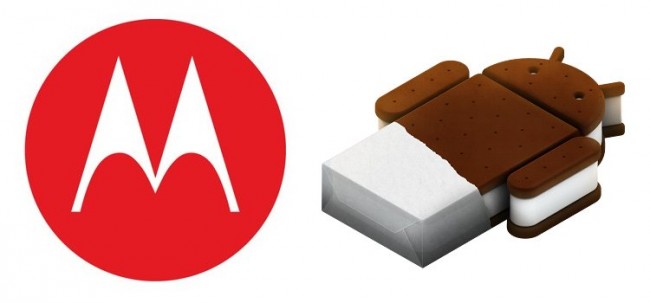Motorola made it clear back in October that they had plans to upgrade the majority of their devices to Ice Cream Sandwich including the DROID RAZR, Bionic and XOOM. Today in a blog post, they have laid out the time line of events that lead us up to that release. How does 4-6 months sound? If you were expecting to see it on your new RAZR in January or February this may seem like a long time, but if you look at this past year’s Gingerbread schedules, 4-6 months isn’t all that bad.
According to Moto, there are 4 major steps that must take place in order for your phone to receive an update:
1. Merge and adapt the new release for different device hardware architecture(s) and carrier customizations
This means that we take the source code and incorporate it into upgrades for devices on which this can perform well, along with making sure the carrier requirements are met. Silicon partners such as Qualcomm, TI, and nVidia adapt this to their chipsets in parallel and we incorporate these as they become available. This is also the time when we begin integrating all of the Motorola-specific software enhancements into the source code. Features like MotoCast, Smart Actions, and our comprehensive enterprise solutions are integral parts of our device experiences, and we want to make sure we continue delivering differentiated experiences for our consumers with these software upgrades.
2. Stabilize and ‘bake’ the result to drive out bugs
This means that we will prepare the upgrade to meet the quality and stability requirements to enter the wireless carrier’s certification lab.
3. Submit the upgrade to the carriers for certification
This is the point in the process where the carrier’s lab qualifies and tests the upgrade. Each carrier has different requirements for phases 2 and 3. There may be a two-month preparation cycle to enter a carrier lab cycle of one to three months.
3.5 Perform a Customer pre-release
We may perform some customer testing before a final release is delivered publicly to our user base.
4. Release the upgrade
We are planning on upgrading as many of our phones as possible. The ability to offer the upgrade depends on a number of factors including the hardware/device capabilities, the underlying chipset software support, the ICS support and then the ability to support the Motorola value add software.
So by our calculations, Moto will take 2-3 months to integrate their Blur and built-in apps into Ice Cream Sandwich. After that, they will send it off to Verizon, one of the slowest more thorough carriers on the planet when it comes to testing updates. After letting Big Red toss it around for 1-3 months, we could finally see it – assuming there weren’t too many bugs that needed to be addressed by Moto and then re-submitted to Big Red. We are looking at anywhere from 4-6 months (minimum), putting us right around June or July. Sounds about right if we look back at when the world finally got around to upgrading previously released phones to Gingerbread this year.
Via: Motorola
Cheers JF!


Collapse Show Comments263 Comments